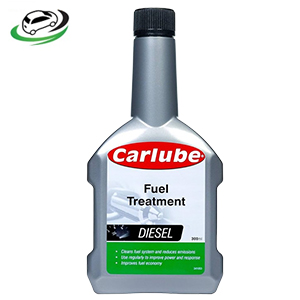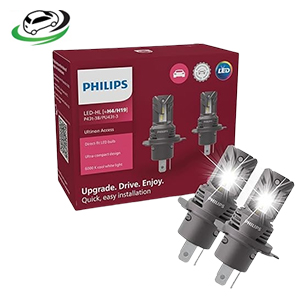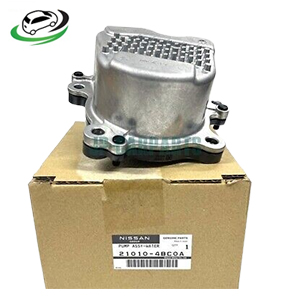-8%
Get Nissan X-Trail T32 Genuine Water Pump Assy 21010-4BC0A
The water pump assembly, or water pump “assy,” is a critical component of the cooling system in internal combustion engines. It circulates coolant through the engine and radiator, ensuring that the engine maintains an optimal temperature during operation. Without the water pump, an engine would quickly overheat, leading to potential damage or complete failure.
In this detailed explanation, we’ll delve into the construction, function, types, common issues, maintenance, and benefits of the water pump assembly.
1. Construction of a Water Pump Assembly
A typical water pump consists of several key components:
- Housing: The housing of the water pump is usually made from aluminum, cast iron, or plastic. It encases the internal parts, providing both structure and protection. The housing also has ports for coolant to flow in and out of the pump.
- Impeller: The heart of the water pump is the impeller, a spinning disk with blades or vanes that propels coolant through the system. It is generally made from metal or reinforced plastic and is designed to create centrifugal force, moving the coolant efficiently.
- Shaft and Bearings: The impeller is connected to a shaft, which is driven by the engine’s belt system. This shaft is supported by bearings to ensure smooth rotation.
- Seals and Gaskets: Seals and gaskets prevent coolant from leaking out of the pump and ensure that the coolant remains in the closed-loop system. These components are vital to the longevity and effectiveness of the pump.
- Pulley: The pulley connects the water pump to the drive belt (either serpentine or timing belt), allowing the pump to be driven by the engine’s mechanical energy.
2. Function of the Water Pump
The water pump’s primary role is to circulate coolant through the engine block, cylinder head, hoses, and radiator. Here’s a step-by-step breakdown of the water pump’s function:
- Coolant Circulation: The water pump impeller spins when the engine runs, creating centrifugal force. This force pushes coolant from the center of the pump towards the outer edges, into the engine block.
- Heat Dissipation: The coolant absorbs heat from the engine and travels to the radiator, where it is cooled by the airflow. The cooled liquid then recirculates back to the engine, maintaining a consistent temperature.
- Thermostat Regulation: The water pump works in conjunction with the thermostat. When the engine is cold, the thermostat remains closed, restricting coolant flow. Once the engine reaches a specified temperature, the thermostat opens, allowing the water pump to circulate coolant through the system fully.
This continuous process ensures that the engine operates within the optimal temperature range, preventing both overheating and freezing.
3. Types of Water Pumps
There are two primary types of water pumps: mechanical and electric.
- Mechanical Water Pump: The traditional type, these pumps are powered by the engine via a belt or chain. The belt turns the pump’s pulley, which drives the impeller. Mechanical pumps are durable and have been the standard for decades, but they can sap some power from the engine, reducing efficiency.
- Electric Water Pump: Electric pumps are powered by the vehicle’s electrical system rather than the engine. These pumps are more efficient, as they operate independently of engine speed and can adjust coolant flow as needed. Electric water pumps are common in modern vehicles and hybrid systems due to their fuel-saving benefits.
4. Signs of a Failing Water Pump
Water pumps generally last between 60,000 and 100,000 miles, but wear and tear can lead to failure over time. Common signs of a failing water pump include:
- Coolant Leaks: If you notice puddles of coolant under your vehicle, it may indicate a water pump seal failure. This is one of the most common symptoms of pump issues.
- Overheating Engine: A malfunctioning water pump will fail to circulate coolant, causing the engine to overheat.
- Whining Noise: A high-pitched whining or grinding noise coming from the front of the engine could indicate a worn-out water pump bearing.
- Steam from Radiator: If you see steam coming from under the hood, it’s often a sign that the engine is overheating due to insufficient coolant flow, which could be caused by a water pump issue.
- Rust or Corrosion: The pump’s metal parts can rust or corrode due to contaminated coolant. This could affect the pump’s performance and lead to leaks.
5. Maintenance of Water Pump Assemblies
Regular maintenance is key to ensuring the longevity and performance of the water pump. Some important aspects of water pump maintenance include:
- Coolant Changes: Coolant should be changed according to the vehicle’s maintenance schedule (often every 30,000 to 50,000 miles). Fresh coolant prevents corrosion and helps the water pump work efficiently.
- Belt Inspection: Since mechanical water pumps rely on engine belts (either the serpentine or timing belt), inspecting these belts for cracks or wear is essential. A worn belt can slip, reducing pump performance or even leading to complete pump failure.
- Seal and Gasket Inspection: The seals and gaskets should be checked regularly for leaks, as these components can wear out over time. Replacing faulty seals promptly can prevent more severe damage to the pump.
- Bearing Lubrication: Some water pumps have lubricated bearings that need regular maintenance. While many modern pumps have sealed bearings, it’s still good practice to check for any unusual noises that may indicate bearing issues.
6. Benefits of a Well-Functioning Water Pump
A properly functioning water pump provides several benefits to your vehicle’s engine:
- Prevents Overheating: By ensuring a constant flow of coolant, the water pump keeps the engine within its optimal temperature range, preventing damage caused by overheating.
- Improves Engine Efficiency: By maintaining a consistent engine temperature, the water pump helps the engine operate more efficiently. This can improve fuel efficiency and performance.
- Extends Engine Lifespan: Regular cooling provided by the water pump reduces the thermal stress on engine components, extending the overall life of the engine.
- Reduces Emissions: An engine running at the correct temperature produces fewer emissions, contributing to a more eco-friendly vehicle.
7. Replacing a Water Pump
Replacing a water pump is often necessary when it shows signs of failure. Here’s a brief overview of the replacement process:
- Drain Coolant: Before removing the water pump, the coolant must be drained from the system.
- Remove Belts: If the water pump is mechanical, the drive belt must be removed to access the pump.
- Remove Old Pump: The water pump is then unbolted and carefully removed from the engine.
- Install New Pump: A new pump is installed in the reverse order, with new gaskets to ensure a proper seal.
- Refill Coolant: Once the pump is installed, the system is refilled with coolant, and air is bled from the system to prevent air pockets.
Conclusion
The water pump assembly is a vital part of any vehicle’s cooling system, ensuring that the engine runs at an optimal temperature. From its construction and function to its types and maintenance, understanding how the water pump works can help prevent engine overheating, improve efficiency, and extend the lifespan of your vehicle. Regular inspection, timely maintenance, and prompt replacement when needed are key to keeping the water pump—and the entire engine—operating smoothly.
Follow us on Facebook for more parts.



